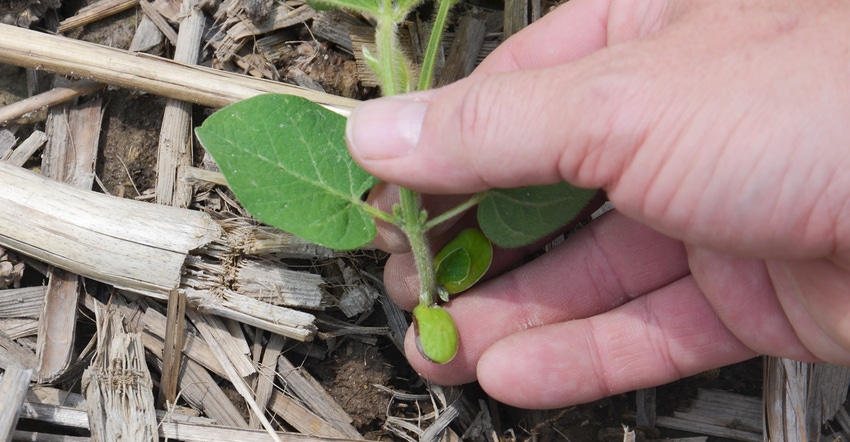
Getting soybeans planted turned out to be a major challenge this season. If your crop is planted and up, your next step is to determine if the stand is thick enough. If you’re satisfied that you have an adequate stand, you can move on to assessing plants to determine if they’re healthy, Steve Gauck says.
Gauck is a sales agronomist for Beck’s. His job is to help determine the cause of problems if someone thinks their beans aren’t growing correctly. He also is the consultant for the Soybean Watch ’19 project, sponsored by Beck’s. His role in this case is simply to observe the field selected for the project at regular intervals during the season. The idea is that he may find problems in that field that are also occurring in your fields.
This is the third season for Soybean Watch. “It’s enjoyable because usually if I’m called to a field, it’s because there is a problem,” Gauck says. “Either insects are chewing on leaves, a disease may be causing issues, the stand is erratic, or something else is going on. In this case, I get to scout soybeans which may be perfectly healthy.”
That frees him up to talk about more basics of soybean production, such as determining growth stages of plants and observing how well nodules form and at what stage of growth.
Healthy beans
It pays to scout, whether you think you have a problem in the field or not, Gauck says. If there is a problem, you can catch it early while there may be time to do something about it.
“Sometimes all we can do is monitor it,” he notes. “With slugs, for example, if you see evidence of them working on plants and even find them, there is no rescue treatment. It’s a matter of hoping the weather turns and gets hotter and drier so they quit bothering the beans. Once they’ve finished feeding, you can do stand counts to see how many healthy plants survived and decide if it’s enough to leave the stand. Two years ago, some fields had to be replanted because of slug damage. If there’s 80,000 good plants left with relatively even distribution, I would leave the stand, especially at this stage in the season.”
Gauck always carries the Purdue University Corn and Soybean Field Guide with him. He finds it useful for identifying what might be bothering a plant if he sees evidence of insect damage or discoloration.
Sometimes very early in the season, he finds a few small holes in young beans, especially if a seed treatment insecticide wasn’t applied. “It’s often from Mexican bean beetles,” he says. “There’s usually a generation which comes out early. Usually feeding activity on soybean leaves from that generation is minimal and isn’t thought to impact yield.”
About the Author(s)
You May Also Like




